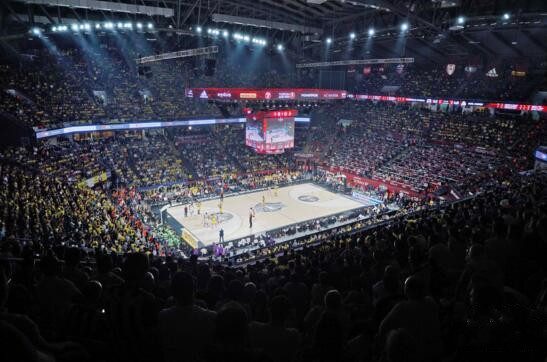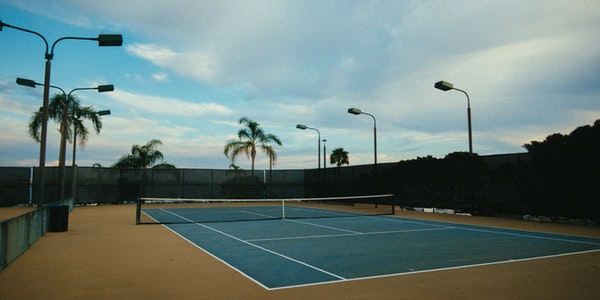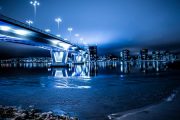Difference Between Lux and Lumens
Lumen is the abbreviation of luminous flux, or Lumens. The unit of illuminance is lux. The transliteration of English lux can also be written as lx.
It is difficult to achieve a brightness of 3000 lux, and it is usually unnecessary. If you are using a “lamp”, an ordinary 40-watt lamp can reach 3000 Lux at a distance of about 0.2 meters. (Or the indoor illuminance in a cloudy sky in the table below) For an object that is uniformly illuminated by light, when the luminous flux obtained on an area of 1 square meter is 1 lumens, its illuminance is 1 lux.
Illuminance unit (lux) Illuminance is a unit that reflects the intensity of light, and its physical meaning is the luminous flux irradiated on a unit area. The unit of illuminance is the number of lumens (Lm) per square meter, also called lux (Lux), namely: Confirm the relationship of 1Lux=1Lm/m2: 1lux=1lm/square meter=1cd×sr/square meter.
In order to have a perceptual understanding of the contrast, the following calculation is given as an example. A 100W
incandescent lamp has a total luminous flux of about 1200Lm. If it is assumed that the luminous flux is evenly distributed on the hemispherical surface, it is 1m away from the light source. The illuminance value at 5m and 5m can be obtained by the following steps:
the area of the hemisphere with a radius of 1m is 2π×12=6.28 m2, and the illuminance value at 1m from the light source is: 1200Lm/6.28 m2=191Lux. Similarly, the area of the hemisphere with a radius of 5m is: 2π×52=157 m2, and the illuminance value at 5m from the light source is: 1200Lm/157 m2=7.64Lux.
General conditions: 100000 LUX in the summer sun, 0.1 LUX candlelight for night street lights (20cm away), 10~15 LUX in sunny days, 30000~300,000 10,000 LUX outdoors in cloudy days, 100 LUX for indoor fluorescent lamps in production workshops, 60cm from 60W desk lamps It is 300LUX, TV studio is 1000LUX, night room is 10LUX, cloudy day is 3000lux, office 30~50lux, sunrise and sunset 300lux, restaurant 10~30lux, moon circle 0.3~0.03lux, corridor 5~10lux, starlight 0.0002~0.00002 lux, parking lot 1~5lux, dark night 0.003~0.0007lux.
Illumination Requirements for Different Applications
Football field night lighting standards
Guide to artificial lighting of football fields: FIFA. This standard includes content such as competition classification,
lighting requirements, recommended values of lighting parameters, and field lighting measurement. It is currently the most comprehensive and up-to-date standard for artificial lighting in football fields. This standard was applied in the 2002 World Cup in Korea and Japan. 
Football lighting is divided into football field lighting and off-field football field lighting, the installation of lights is different in different venues. The standard should be based on the function of the football field to determine the lighting standard, roughly divided into seven levels, training and entertainment activities illuminance 200lx, amateur games 500lx, professional games 750lx, general TV broadcast 1000lx, large-scale international game HD TV broadcast 1400lx, emergency lighting 750lx.
The lamps used in football stadiums are generally 1000W and 1500W LED floodlights. The lighting position can be installed on the edge of the stand ceiling. The two methods are installation and the pole above the pole, which is installed around the stadium; it is determined according to the different lighting requirements of different stadiums. The number of lights and power size.
The standard of basketball court lighting
For those who play basketball, there are amateur, professional, and professional. Similarly, basketball court equipment is also classified, such as basketball court lighting, which is divided into 6 categories in the industry standard (International Lighting Association):
Ⅰ (training and recreational activities),
Ⅱ (amateur competition/professional training),
Ⅲ (Professional competition),
Ⅳ (TV broadcast national/international competitions),
Ⅴ (TV broadcast major international competitions),
Ⅵ (HDTV broadcasts major international competitions).
Of course, in reality, there are many basketball courts operated by foreign companies that have lower standards than
I (training and recreational activities). Choose the lighting level of the basketball court according to the actual needs of your basketball court, and the cost performance will be high.
Ⅰ (Training and recreational activities) The lighting standards of basketball courts are in line with basketball courts operated by outsiders, basketball courts in primary and middle schools, and internal basketball. Ⅰ (Training and entertainment activities) The basketball court lighting standard requires a horizontal average illuminance of 300 lux, and the uniformity requirement is not high.
Ⅱ (Amateur competition/professional training) Basketball court lighting standards meet the high-level externally operated basketball courts, college basketball courts, county-level public basketball courts, and high-level internal basketball courts within the company. Ⅱ (Amateur competition/professional training) The basketball court lighting standard requires a horizontal average illuminance of 500lux, and the uniformity requirement is relatively high.
Ⅲ (Professional competition) The basketball court lighting standard meets the requirements of the provincial and municipal sports individual sports associations for professional or professional athletes. Ⅲ (Professional competition) the basketball court lighting standard is the level of average illumination 750lux and uniformity requirements Very high.
Ⅳ (TV broadcast national/international competitions) Basketball court lighting standards comply with international invitational tournaments, general international individual events, general intercontinental individual events, international tournaments, national youth games, ethnic minority games, domestic general individual events, domestic individual event series, provincial Games, etc., that is, countries and international competitions outside the scope of the definition of major countries and international competitions.
Ⅳ (TV broadcasting national/international games) basketball court lighting must fully consider the requirements of camera contrast, and broadcasting requires many cameras to work at the same time. For the broadcast of basketball games, the main cameras need to be set up on the stands on both sides of the arena; the auxiliary cameras are placed at both ends of the arena for close-ups of the players’ basketball actions. The illuminance requirements in the direction of the main camera and the vertical illuminance requirements in the direction of the auxiliary camera will be different, which are 1000lux and 750lux respectively.
There are also certain requirements for the uniformity of illuminance in the vertical direction.
Ⅴ (TV broadcast of major national/international competitions) The lighting standards of basketball courts conform to the competitions held by the International Olympic Committee, and the various competitions held by the International Olympic Committee recognized by the A-type international individual sports organizations (such as the Olympic Games, World Championships, World Cup, Intercontinental Cup and corresponding qualifiers, etc.) and games organized by the State Sports General Administration (Chinese Olympic Committee), various competitions held by national individual sports organizations recognized by the State Sports General Administration (Chinese Olympic Committee) (such as national games, national individual events) Championships, national individual leagues, etc.). The illuminance requirements in the direction of the main camera and the vertical illuminance in the direction of the auxiliary camera are respectively 1400lux and 1000lux, and there are also high requirements for the uniformity of the illuminance in the vertical direction.
Ⅵ (HDTV broadcast of major national/international competitions) Basketball court lighting standards comply with the Olympic Games, World Championships, World Cup, Intercontinental Cup (football, basketball, volleyball, table tennis, swimming diving, badminton, etc.), National Games, etc., or broadcast by TV Other events recognized by organization and event requirements. The illuminance requirements in the direction of the main camera and the vertical illuminance in the direction of the auxiliary camera are respectively 1400lux and 1000lux, and there are also extremely high requirements for the uniformity of the vertical direction.
Tennis court lighting standards
Tennis court lighting design scheme
1. Illumination standard of tennis court (GB): amateur competition (training): 150lx-300lx, general competition 300l-500lx, official competition: 500-750-higher (1500lx). The auditorium is 30lx-100lx.
2. Installation environment description:
The height of the fence around the outdoor tennis court is generally between 4-6 meters, which can be increased or decreased according to the surrounding environment (height of trees or buildings). For stadiums where lighting needs to be installed, except for the distribution of indoor roof lamps, no lamps should be installed in the sky above the outdoor stadium and on both sides of the end line. Outdoor court lighting should be installed on both sides of the fence at a height of more than 6 meters from the ground, and the lights are evenly illuminated from the scene on both sides of the court.
3. Professional advice:
The light source of the tennis court lighting should be a metal halide lamp (white light). The lamp should be a floodlight type. The reflector should be clear. It is best to use an integrated lamp. The power of the light source should be 400w according to the height of the lamp, the density of the lamp and the light demand. 1000w.
4. According to different competition levels, the lights can be grouped and controlled;
5. The height of the lamp should be 6-8 meters, and it should be installed above the line of sight of people;
6. The distance between lamps and lanterns is larger, which can appropriately reduce the glare.





